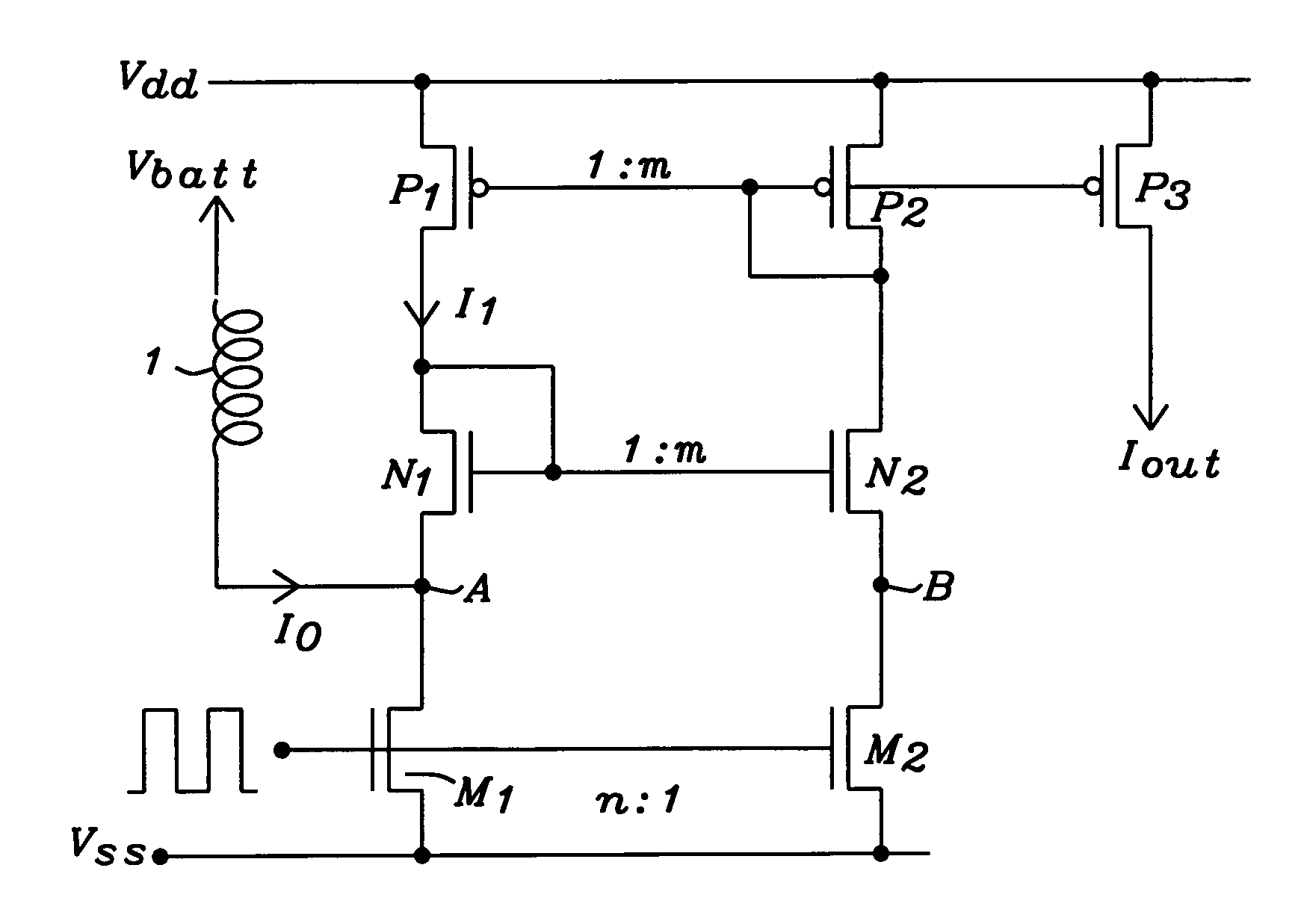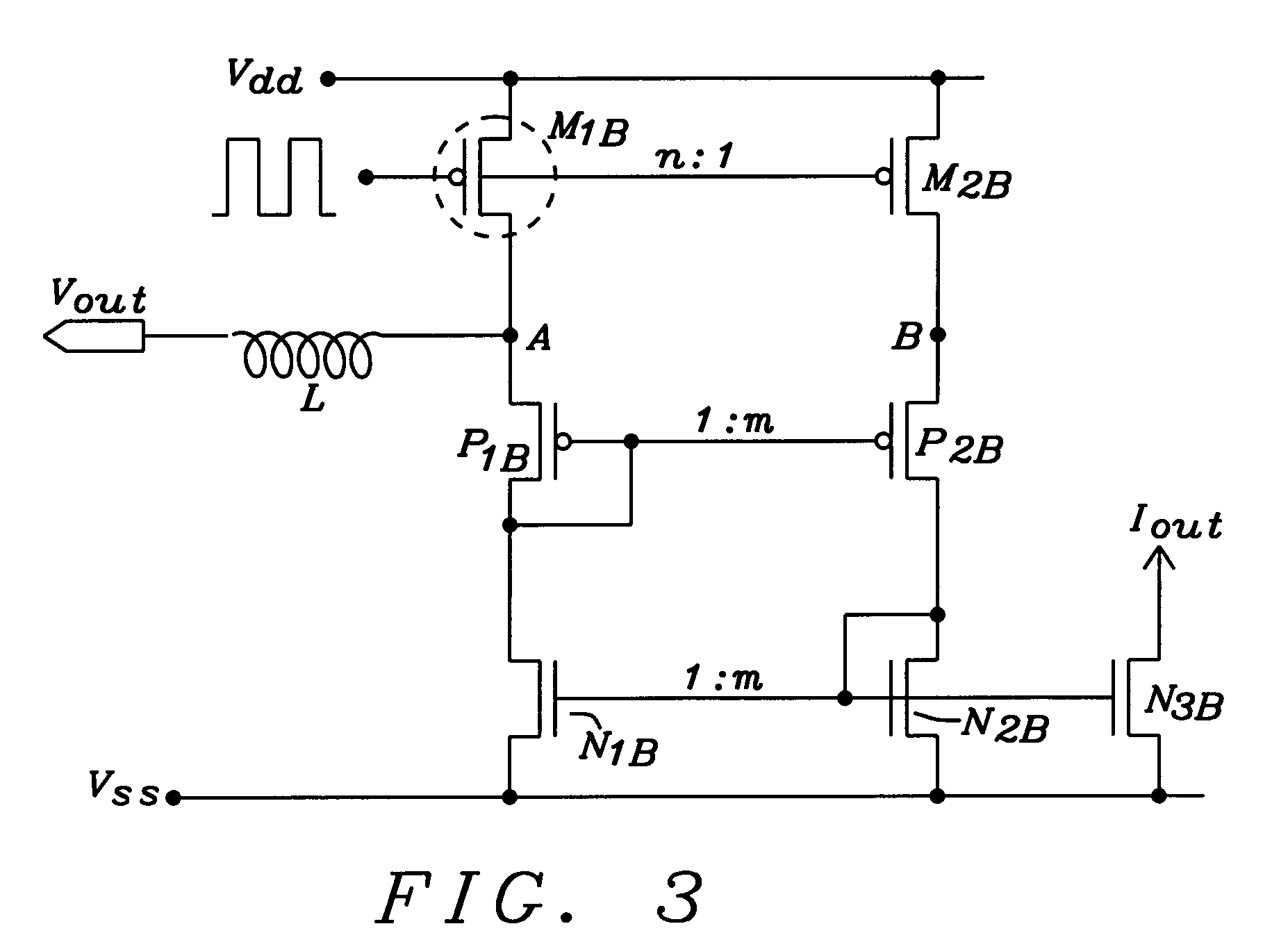Current sensing structure for integrated power switches
a current sensing structure and power switch technology, applied in the direction of ac-dc conversion, electric variable regulation, instruments, etc., can solve the problems of reducing efficiency and inaccuracy, and achieve the effect of stabilizing current and stabilizing curren
- Summary
- Abstract
- Description
- Claims
- Application Information
AI Technical Summary
Benefits of technology
Problems solved by technology
Method used
Image
Examples
Embodiment Construction
[0023]The preferred embodiments of the present invention disclose novel circuits and methods used for current sensing of integrated switching converters. It has to be understood that the structure of the circuits could be used for a multitude of different current sensing applications.
[0024]FIG. 2 shows, as example of the circuit invented, a schematic of the switching and current sensing part of an integrated switching boost converter. The invention uses a “replica biasing” technique to avoid a resistor for current measurement as shown in FIG. 1 prior art. In the circuit shown in FIG. 2 the current through the pass device M1 is sensed by biasing another MOSFET device M2 under similar conditions like pass device M1 but with scaled dimensions. Similar conditions mean in this context that gate, source and drain voltages of pass device and MOSFET device M2 are nearly equal. In the case of the present invention the gate and source connections are identical anyway and the self-biased loop ...
PUM
 Login to View More
Login to View More Abstract
Description
Claims
Application Information
 Login to View More
Login to View More - R&D
- Intellectual Property
- Life Sciences
- Materials
- Tech Scout
- Unparalleled Data Quality
- Higher Quality Content
- 60% Fewer Hallucinations
Browse by: Latest US Patents, China's latest patents, Technical Efficacy Thesaurus, Application Domain, Technology Topic, Popular Technical Reports.
© 2025 PatSnap. All rights reserved.Legal|Privacy policy|Modern Slavery Act Transparency Statement|Sitemap|About US| Contact US: help@patsnap.com



